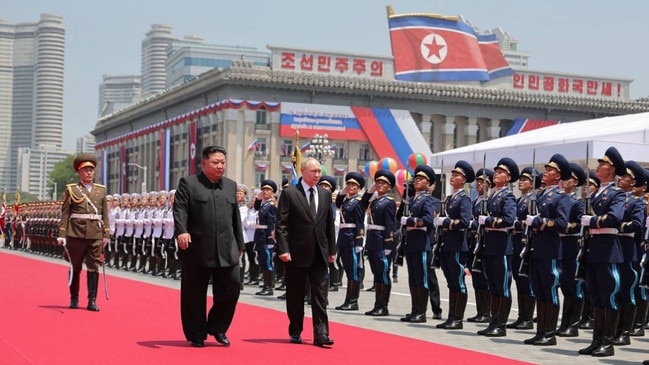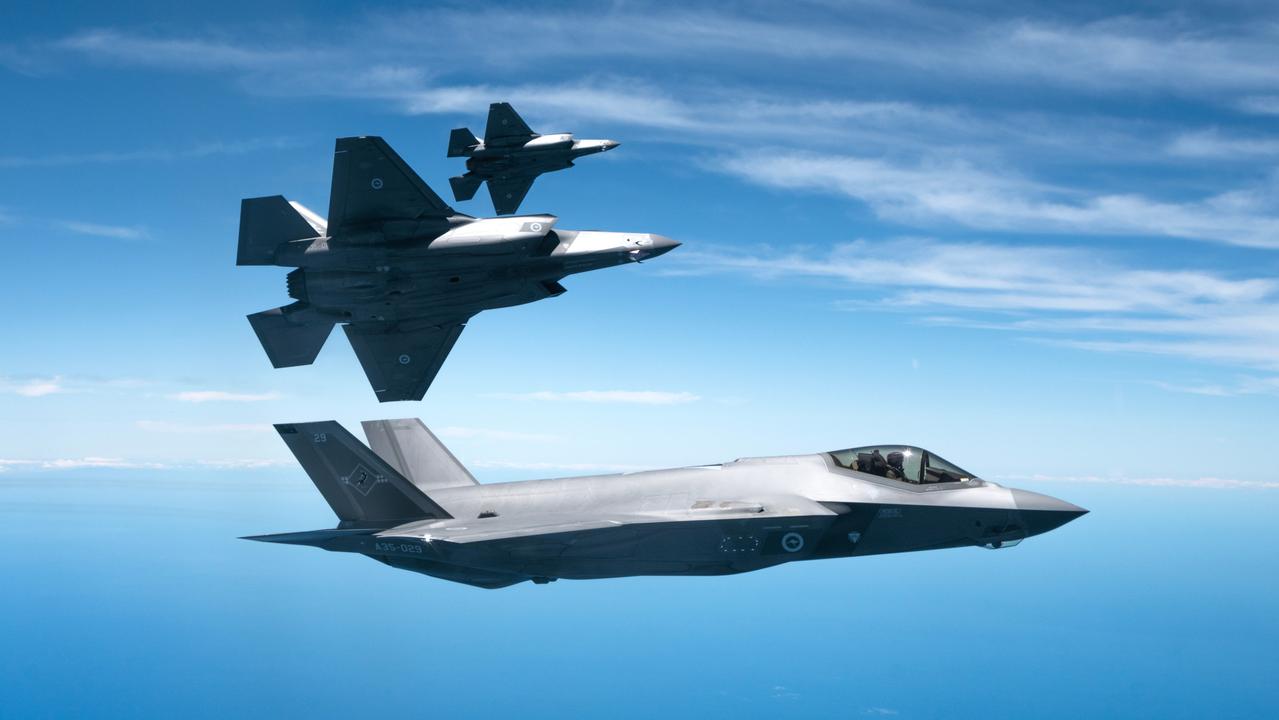‘Dark Quad’ threat demands urgent action
The ‘rules-based global order’ now wavers under intense pressure.

The world seems to be staggering under the weight of its geostrategic challenges. Consider the lingering impacts of Covid, Russia’s invasion of Ukraine, and the horror and aftermath of the October 7, 2023, Hamas attacks on Israel. Added to this are the effects of sudden advances in technology, especially AI and social media, as well as the risk of political and economic ruptures during this coming year in the US. And then there is the rise in authoritarianism, including the establishment of an alternate global order that some now describe as the “dark Quad”, with its current membership of China, Russia, Iran and North Korea (with Venezuela now also seeking entry).
The “rules-based global order” now wavers under intense pressure. Russia is determined to destabilise the post-World War II US-led international system. China seeks to build its own alternative order. Together, both countries represent a threat to the international system and institutions that modern Australia has come to depend so much upon.
The Biden administration’s most recent national security strategy recognises China as the only state intending to reshape the international order and with the national power to do so. The US recognises China’s attempts to expand its network of dependent vassal states into a quasi-military security pact designed to foil US-led alliances and existing multilateral security frameworks.
The People’s Liberation Army continues to modernise and massively expand its military capabilities. Since 2021, China has produced more than 400 new fighter aircraft (now 1900 in total), 20 warships (taking the PLA navy to more than 400 major surface combatants) and doubled the size of its nuclear arsenal. President Xi Jinping’s internal speeches, proclamations and actions demonstrate his global ambitions.
Since the 19th Party Congress in 2017, Xi has publicly declared his intention to bring China deeper into the international system. Known in Mandarin as tianxia (“All under heaven”), Xi sees a return of China to the top of the international hierarchy sometime before 2049. Given his age and determination to reshape China and the world, Xi’s ultimate plan to achieve this ambition may well begin decades sooner.
The US is responding. What is clear, however, is that it cannot currently match China’s industrial capacity or output. America therefore needs to massively uplift its manufacturing base, both in scale and sophistication. Militarily, the US needs significant investment in long-range, stand-off weapons that can help it maintain air dominance throughout East and North Asia, as well as be able to protect key bases, allies and partners against air and missile threats. The US must also prioritise the development of kinetic weapons capable of penetrating and destroying hard targets, including those buried deep underground. It must stockpile anti-ship missiles, precision-strike missiles and extended air-to-ground missiles, and deepen its inventory of conventional weapons, especially 155mm artillery, which remains critical to achieving over-match against military forces on the modern battlefield.
The US Navy needs more submarines, the US Air Force needs more bombers, and the US Marine Corps and US Army need to increase their ability to dominate key maritime choke points and critical urban areas inside the “weapon engagement zones” of North and East Asia. Only with a credible “stand-in” deterrence capability can the US assure its allies of its commitment to a continued presence in Asia, as well as provide the military capability necessary to deter China’s aggression. As the military dictum goes: in order to maintain peace, the US must prepare for war.
So what is Australia’s role in all of this? The government’s 2024 National Defence Strategy (NDS) identifies China’s military modernisation and expansion as the primary driver of our defence posture.
The strategy acknowledges that China has significantly enhanced its power projection capability, now extending deep into Southeast Asia and the Southwest Pacific. Beijing has developed advanced long-range missile systems and now routinely deploys PLA-N major fleet patrols across Australia’s key maritime approaches.
While the NDS doesn’t imagine a “force-on-force” scenario against China as a core capability determinant, it does note that Australia has alliance obligations as part of ANZUS, which, in the event of a major theatre war between the US and China, would at the very least involve some level of US basing and logistics support. In such a scenario, the mere presence of US forces on Australian soil under the enhanced “force posture agreement” makes it an early and likely target of any Chinese strike or counter-strike. Australia must therefore plan accordingly.
Critics of the NDS would argue that the threat of Chinese aggression against Australian military operations throughout Southeast Asia is overstated. Evidence suggests otherwise: on May 26, 2022, a Royal Australian Air Force maritime patrol aircraft, operating in international airspace, was intercepted by a Chinese fighter firing flares. On November 14, 2023, HMAS Toowoomba’s personnel were removing fishing nets caught on her propellers within Japan’s exclusive economic zone when a Chinese warship used its active sonar against the ship’s divers. On May 4 this year a Chinese J10 fighter engaged in a hostile act against an Australian Navy Seahawk helicopter flying in international waters, by firing flares above and in front of it.
While some might argue none of these events directly threatens our physical geography, they do nonetheless contravene international law, specifically the UN Convention on the Law of the Sea, an important element of how the rules-based global order actually operates.
These activities are not isolated; almost every democratic country throughout Southeast Asia faces similar levels of coercion from PLA forces operating in nearby international zones.
The hubris of PLA actions serves as an “indicator and warning” that without a dramatic and necessary uplift in US-led, Australian-backed military deterrence, the PLA increasingly seems able to assert itself as the dominant military power throughout the Indo-Pacific.
If true, the consequences of this power shift would be history-defining, as well as signal a free hand to authoritarian governments everywhere (including to all members of the “dark Quad”). Yielding the Indo-Pacific to China effectively extinguishes the rules-based global order.
For Australia, the changing dynamic of global power represents a moment for the government to match its rhetoric with reality. If, as the NDS prescribes, we are faced with the most serious strategic environment since WWII, then now is the time to act, and with extreme urgency.
-
Brigadier Ian Langford (Retd), DSC and two bars, holds a PhD from Deakin University and is a tenured professor at the University of NSW.



